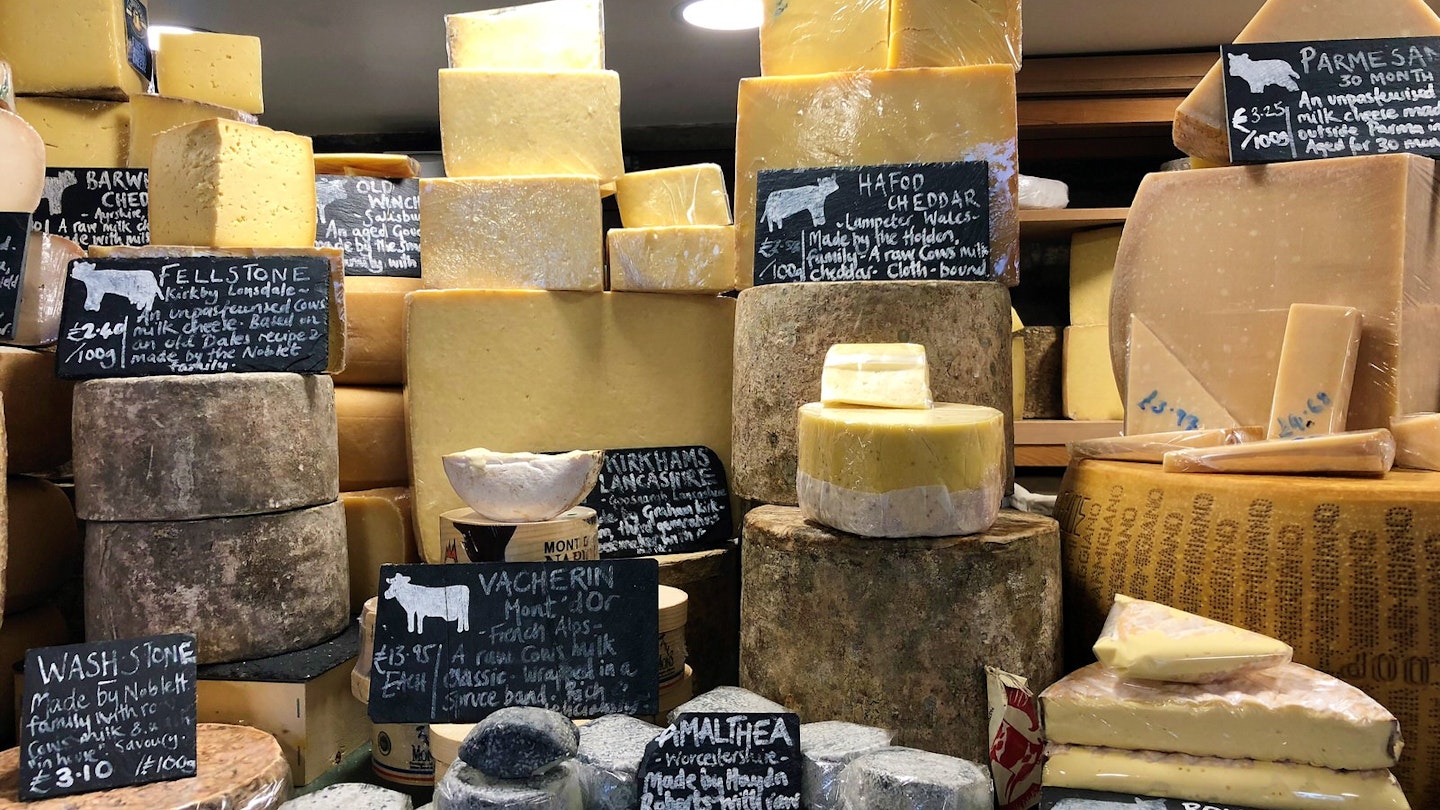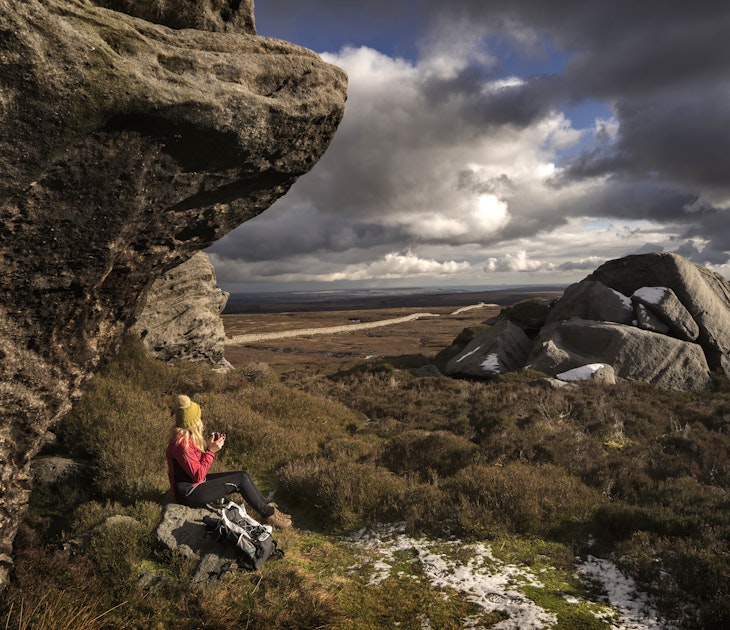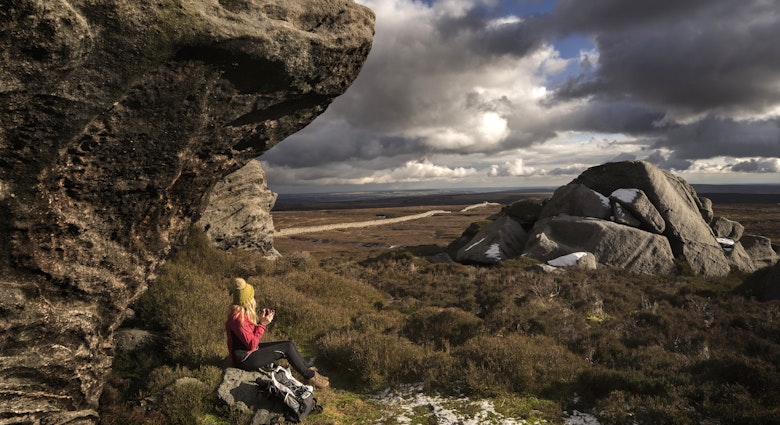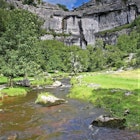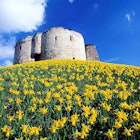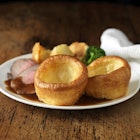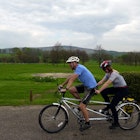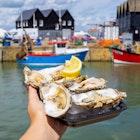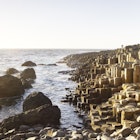Cheesemaking has been part of the rural and cultural landscape in the Yorkshire Dales for centuries, with recipes passed down over the years from medieval monks to dairy farmers. Today, traditional skills that were once thought lost are being revived thanks to passionate small businesses who want to spread the flavour of Yorkshire’s bucolic hills and hay meadows.

‘Gromit, that’s it! Cheese! We’ll go somewhere where there’s cheese!’
When Britain’s Aardman Animations created an unlikely national treasure with a strong Northern accent and an ardent passion for Wensleydale cheese, it brought new-found fame to one of Yorkshire’s oldest foods. Yet, ironically, as Wallace & Gromit’s international star ascended, the Wensleydale Creamery was fighting for its survival. In April 1992, a year after Wallace & Gromit’s first Academy Award nomination, the last creamery in Wensleydale producing Wensleydale cheese shut down and production was slated to be moved to a newer facility in…Lancashire (Yorkshire's arch rival). Local protests ensued in the pint-sized Dales village of Hawes, where the creamery had existed in one form or another since 1897, and within six months, it was back up and running thanks to a buyout by a team of ex-managers and local businessmen. It became a true community enterprise and today is one of the Yorkshire Dales’ most popular attractions, with 300,000 visitors in 2018. There’s a museum (complete with Wallace & Gromit displays, of course), a cafe serving Wensleydale-based dishes, cheesemaking demonstrations, and a shop with truckle-loads of tasters.
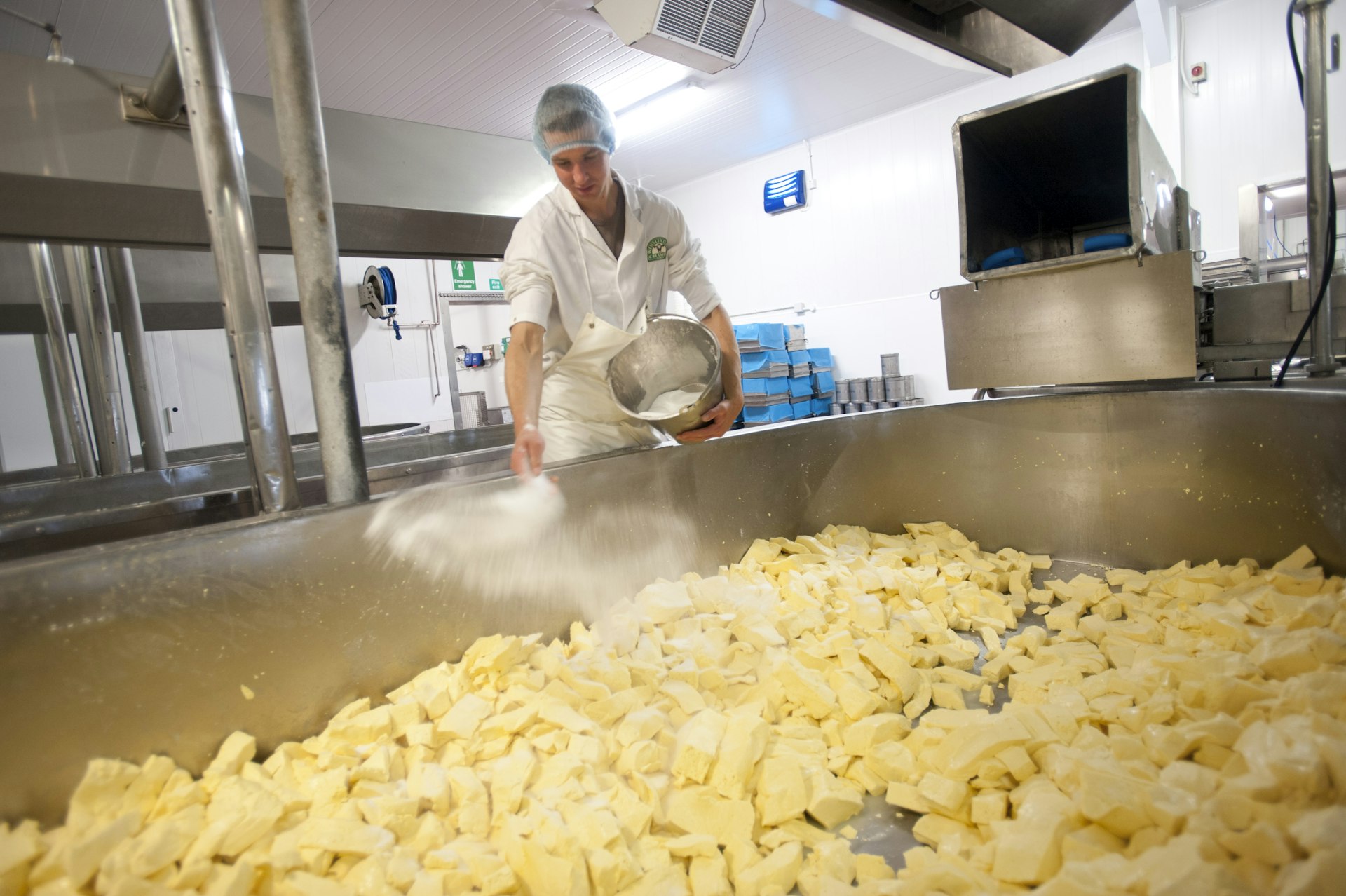
‘When I used to come when I was younger, it would be one room where you’d see into the factory and you’d taste the cheese,’ says Saffron, a 23-year-old cheesemaking demonstrator at the creamery. Originally from Essex, she has been coming to the Dales all her life on family holidays and moved here permanently a year ago.
Over that time she has noticed a growing interest in cheesemaking among visitors. ‘It’s amazing how many more people are getting involved with cheesemaking at home. I have so many people come in and ask me about the intricacies. A lot of them are young people,’ she says.
Return to the farm house
Indeed, small-scale cheesemaking is having a resurgence in this area. Artisan shops are proliferating and the Yorkshire Dales Cheese Festival will celebrate its third year on 14-15 September 2019. Its base is the Wensleydale Creamery, with satellite events across the national park such as open farms, tasting competitions and a guided whey walk.
Near Settle, on the southwestern edge of the Yorkshire Dales National Park, the Courtyard Dairy is a cheesemonger and cafe in a cluster of old stone buildings, running cheesemaking courses and housing a small on-site museum about the history of caseiculture (as it’s formally known) in Yorkshire. Its raison d’etre is to support individual farms that still make raw-milk cheese on their own properties.

‘100 years ago there was probably about 200 farms making Wensleydale cheese, and the good thing is that every one would have been different,’ says co-owner Andy Swinscoe, who has witnessed – and helped encourage – the return of British farmhouse cheesemaking, which all but died out after the Second World War. ‘On my counter I do 30 raw-milk traditional cheeses, and 27 of them have only been going since 2005.’
What the monks did for Yorkshire
New creations aside, cheesemaking in Yorkshire goes back centuries. The skills were thought to have been spread across Europe by the Romans, but it was the French who carried the original Wensleydale recipe into the Dales. Specifically, it was Cistercian monks who settled near Aysgarth and then founded Jervaulx Abbey in 1156 AD.
‘The monks brought over a number of different things from France, one being the white horses. Another being this recipe, which is what started as Wensleydale cheese,’ says Anna Burdon, whose family runs Jervaulx Abbey today. ‘The Wensleydale cheese you know now is the white crumbly cheese, but originally it wasn’t like that, it was more of a blue cheese,’ she explains.
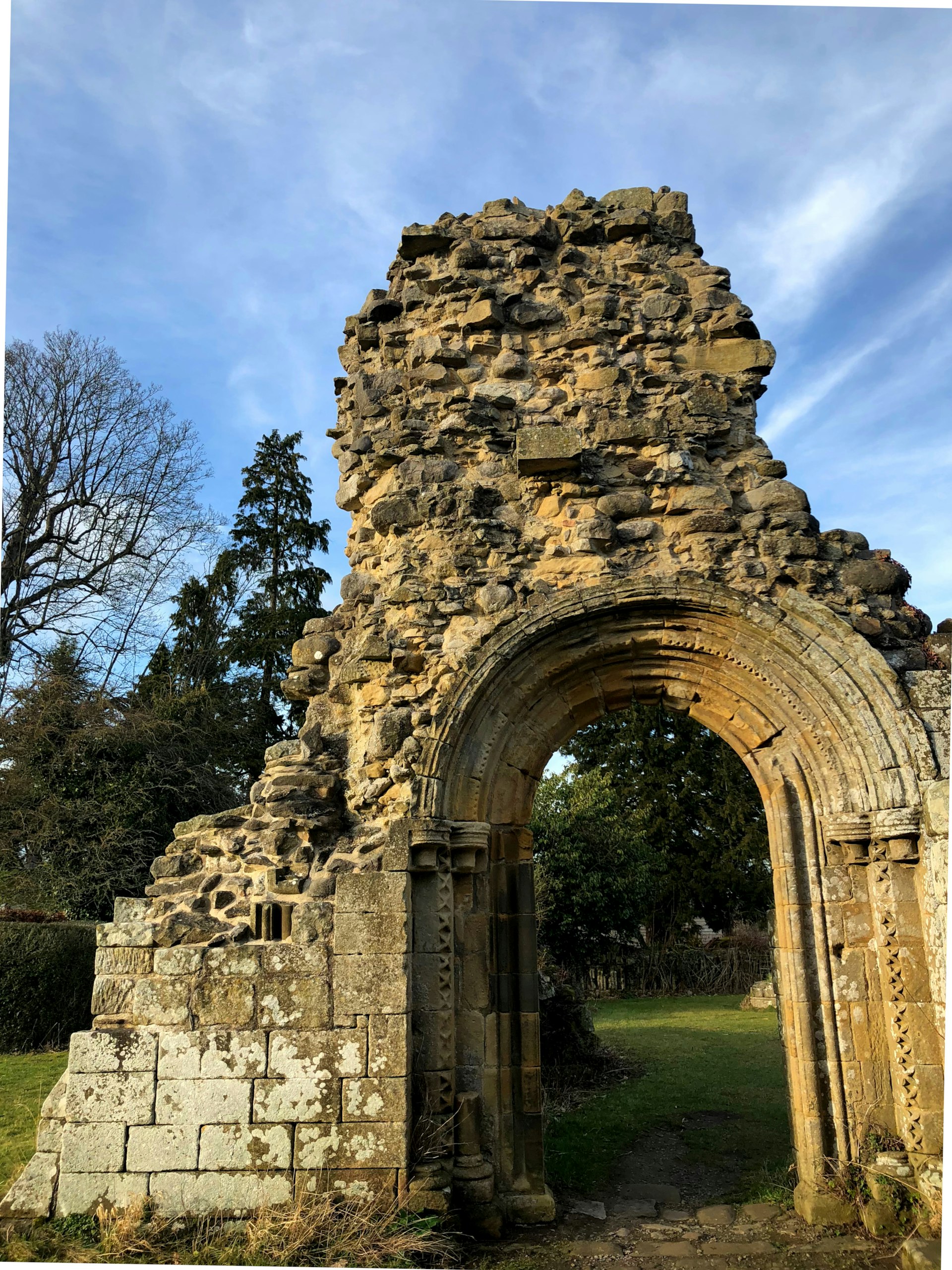
Today, Jervaulx Abbey is a lovely, rambling ruin with a tea room, surrounded by meadows that the monks’ sheep would have once fed on. Originally, Wensleydale would have been made with ewes’ milk instead of cows’ milk. The sheep would have also provided wool, and both these products would have been sold at local markets to finance the monastery – along with other staples that have become synonymous with Yorkshire, like beer.
Evolution of Wensleydale
When the monasteries were dissolved under Henry VIII, cheesemaking was passed on to Yorkshire farmers’ wives. There, the know-how remained, etched into the daily routines of barnyard milking, for hundreds of years. Right up to the 1930s, after the Industrial Revolution broke many of Britain’s cottage industries, Wensleydale was predominantly a farmhouse cheese. Back then it was a moist, soft creation with blue veinings that could almost be spread like butter.
This September the Dales Countryside Museum in Hawes will launch an exhibition titled Dairy Days, exploring just how deep Yorkshire’s farming and cheesemaking roots go. It was World War II that sounded the death knell for farmhouse cheese production in the Dales. Cheese rationing was introduced and lasted until 1954. During this period only certain types of cheese were legally allowed to be made: Cheddar, Cheshire, Dunlop (a Scottish version of Cheddar), Leicester and Wensleydale. Efficiency was paramount, and these cheeses could only be made to a specific government recipe that fundamentally changed the flavour and texture of the cheese.
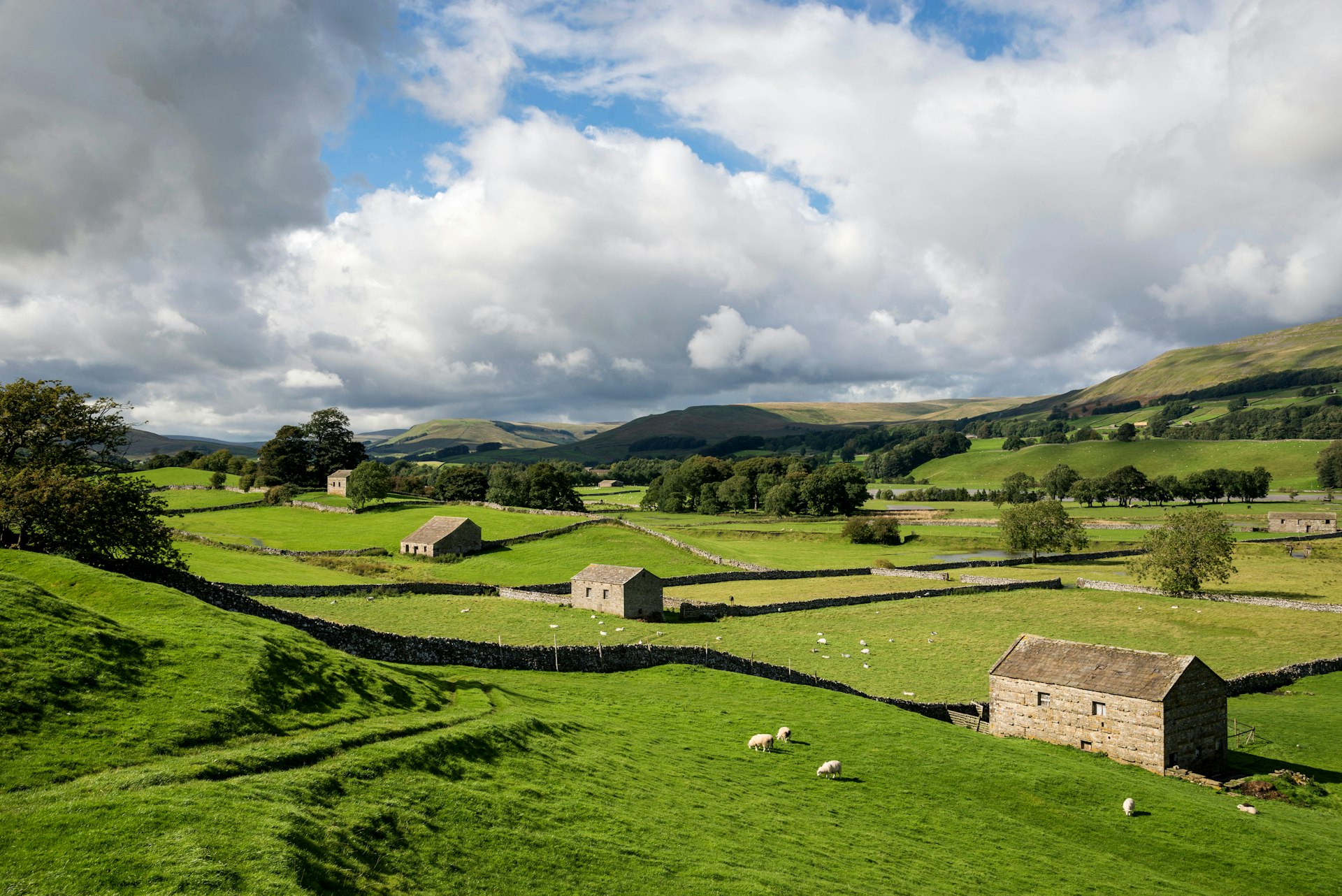
‘We lost a lot during the Second World War,’ says Andy. ‘The producers that were still making it at farmhouse level couldn’t make Wensleydale how they’d been making it all their lives. They had to make it to this government method, which was fast and produced an acidic, sharp flavour. Which is why between Wensleydale, Cheshire, crumbly Lancashire, when you taste them, there’s very little difference these days.’
The new cheese vanguard
Within the cool confines of Andy’s limestone-walled barn deli, there is anything but homogeny between the truckles of Fellstone, Yorkshire parmesan, Moorland Monster, Hafod Cheddar and Kirkham’s Lancashire. They are members of a growing tribe of British farmhouse cheeses that are uniquely of the place where they are produced.
For Andy, the beauty of British farmhouse cheeses is found in the nuances that come with terroir and technique. ‘If you look at Wensleydale in the early 1900s, farmers were following a broadly regional recipe but each one tweaked it. Then they had slightly different equipment, slightly different cows, and slightly different pasture,’ he explains. ‘The Yorkshire Dales' hay meadows are protected. Per square metre, there’s something like 30 different species of grass and herbs and things like that – and that is your flavour.’
The local cheesemaking community is as diverse as the grass and herbs, but one thing the producers have in common is that they’re all tiny operations. Gillian, a radiography lecturer at Bradford University, makes goat’s cheese with eight pedigree Anglo-Nubian goats near Hebden Bridge in West Yorkshire. Italian Mario produces Yorkshire pecorino, parmesan and blue in a Leeds suburb. Tom and Clare of Whin Yeats Farm make a Wensleydale-style cheese called Fellstone that’s aged for three months until it is nutty, complex and mellow – try it paired with rich fruit cake (a delicious Yorkshire tradition) in the Courtyard Dairy’s cafe. And Sam, currently working behind the deli counter in the Courtyard Dairy, is about to start making his own cheese by borrowing a handful of sheep from a farm down the road and equipment lent by Andy.
Andy’s support of local producers is partly down to a battered hand-written book housed in a glass case in the Courtyard Dairy’s small museum. ‘My great grandmother found her mother’s notes on how to make double Gloucester, and these are them. We thought, if my great grandmother has kept that by chance, there’s other people who will have stuff like that that’s been passed down through their family.’
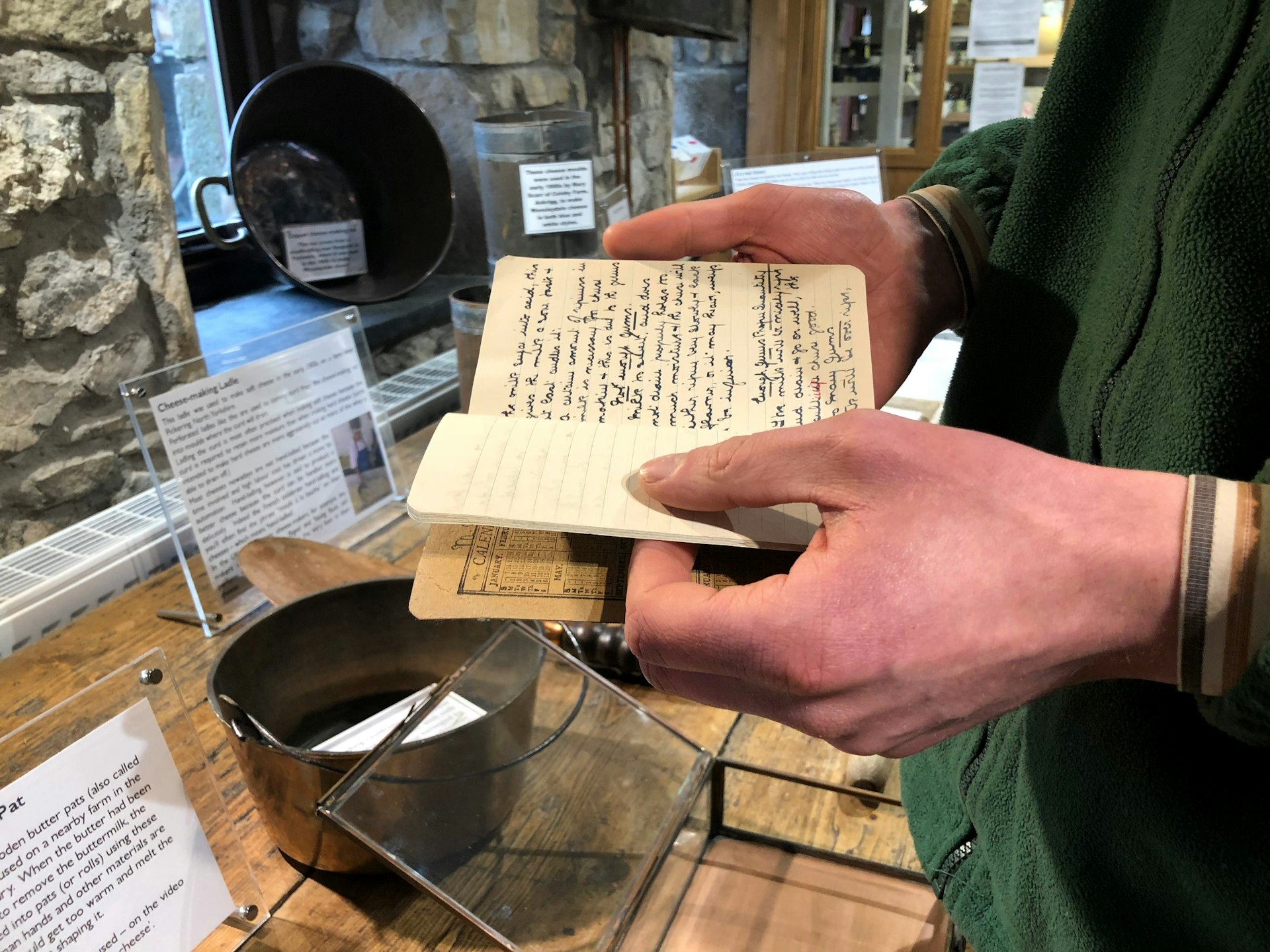
This discovery sparked Andy and his wife Kathy’s drive to unearth and share traditional recipes and methods of cheesemaking. They are now working with a farm in Nidderdale to try to recreate how the local cheese would have been made in the early 1900s, using notes they have found in farmers’ attics and barns. And they are spreading the knowledge they’ve accumulated with anybody who takes an interest.
‘It’s about trying to improve what we’ve got here in the Dales and recreate what we once had, so that when people come to the Dales they have a taste of what would have traditionally been made here,’ says Andy. The monks of Jervaulx might not recognise Wallace’s Wensleydale or even Fellstone, but they’d undoubtedly appreciate the cheesemaking legacy they helped establish.
Make the most of your travel with sightseeing tours and activities from our trusted partners.
https://shop.lonelyplanet.com/products/england-travel-guide-9
